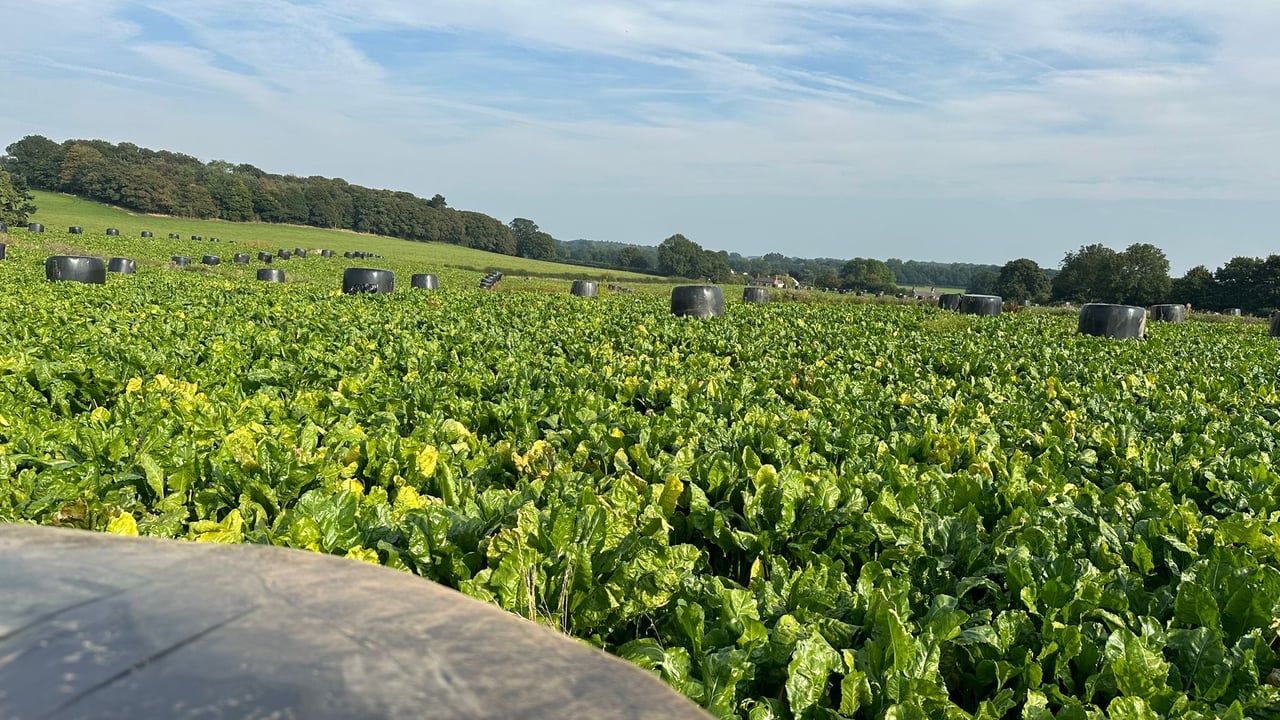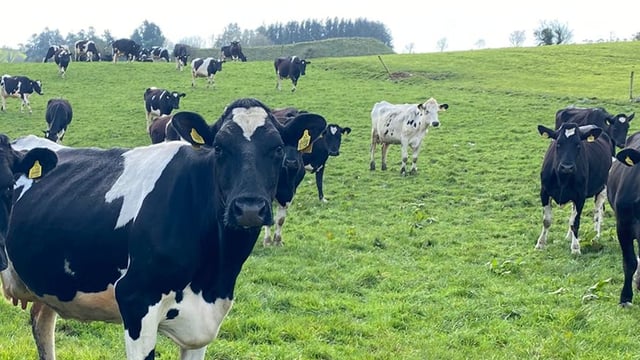What are the advantages of feeding fodder beet this winter?
Fodder beet is currently one of the best value for money feeds in terms of units of energy (1 UFL/DM) available to dairy farmers across the country.
On top of this, many farmers admit that their cows will fight with each other to get to it, like children with sweets.
Currently, a tonne of washed and chopped beet is costing approximately €54 to buy in according to dealers that Agriland contacted, while beet off the field is in the region of €40/t.
However, dealers in other parts of the country are quoting the feed source to be anywhere in the region of €60 to €70 due to increased production costs.
In contrast, according to Teagasc, grazed grass is costing farmers approximately €95/t DM, and silage is worth roughly €234/t DM.
Why feed beet?
Fodder beet is a great source of energy for cows (12-13 MJ ME/kg DM), which is easily taken up due to its high rate of palatability.
This energy can be greatly utilised due to beet's ability to digest quickly within the rumen, when cows are fed under the correct diet.
However, protein (7% crude protein (CP)) and fibre (19.5% NDF) levels can be considered low when compared to grass silage (15%+ CP on high quality grass) and (42-65% NDF).
| Value | Fodder beet |
|---|---|
| Dry Matter (DM%) | 20% |
| Energy (ME) | 13 MJ ME/kg DM |
| Crude protein (CP%) | 7% |
| Fibre (NDF%) | 19.5% |
| Sugars (%) | 65% |
| Starch content (%) | 2% |
An animals diet must be well watched when feeding beet; for example given beet's low protein levels, it should be paired with an 18% CP concentrate or soya meal, ensuring a good balance to maintain energy levels, body condition score (BCS), and production.
However, when choosing a concentrate to balance the diet, it is important to go with one that has low sugar levels due to beet's naturally high sugar contents.
The diet must also be balanced to include sources of fibre such as straw as well as minerals such as calcium, phosphorus, and copper.
Farmers introducing beet to the diet must do so gradually, allowing a two-week introduction period during which feed levels are increased by 4-5kg every four days.
Once incorporated, farmers are recommended to feed no more than 5-10kg fresh weight (FW)/head/day to weanlings and no more than 25kg FW/head/day to cattle over 500kg.
Although chopped beet is more expensive, it greatly increases intake and provides a better liveweight gain, which is critical - especially for young or pregnant stock.
Washed beet also prevents and chances of contamination in the feed yard and encourage good rumen functionality, while chopped beet prevents any choking hazards.
It is also important to wait a week following harvest before feeding any of the crop, as high nitrate levels may cause bloat in animals.
Storage
In places such as New Zealand, many farmers graze beef in situ; however, that is not typically possible here given our climate.
Despite that, beet stores well in clamps, as well as loosely in indoor or outdoor areas when done correctly, with farmers being advised to wash and chop their beet pre-storage.
The main caution when storing beet outside is frost, which can severely damage the fodder and reduce palatibility.
If you are storing beet outside, farmers are generally advised to cover the crop with material such as straw if it is not being clamped.
Clamps should also be checked regularly for any signs of hot spots that may cause damage to the crop.





